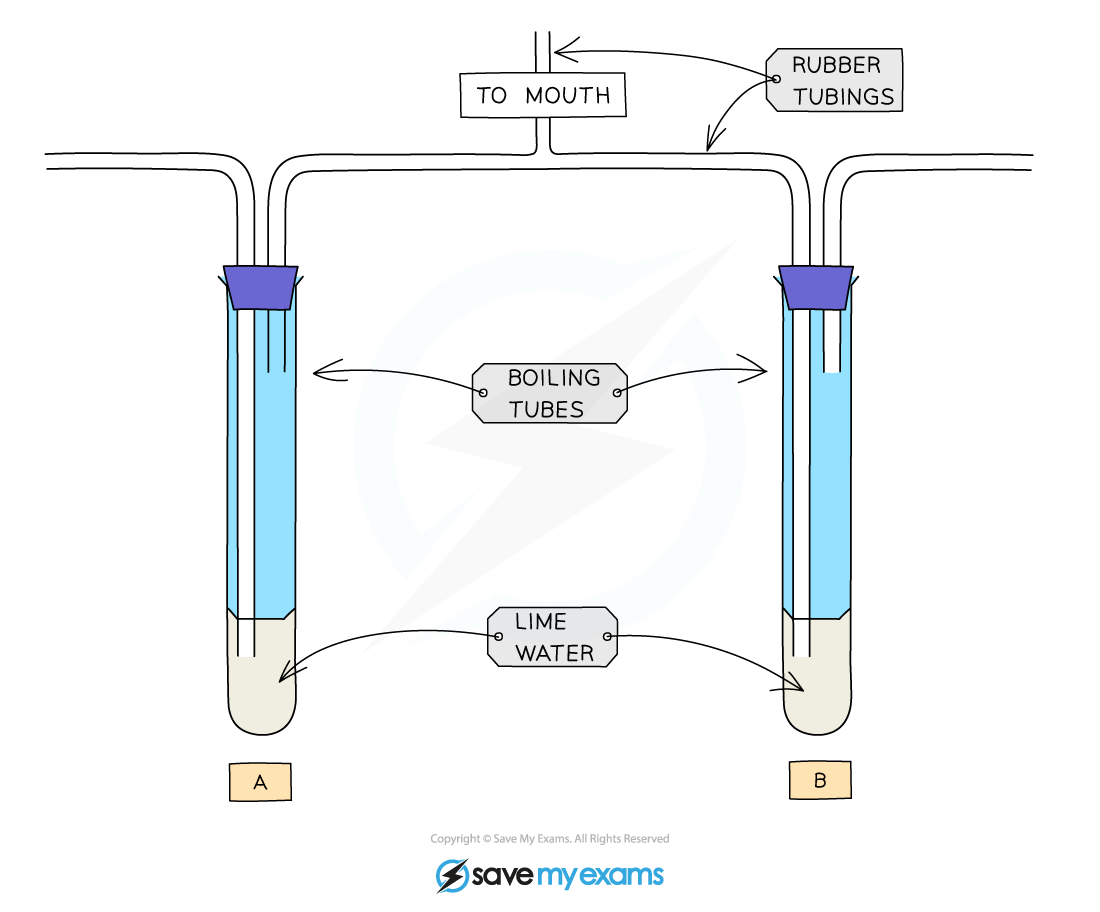Biology - Modelling the respiratory system / Bell jar model / Huff and puff apparatus
1/9
There's no tags or description
Looks like no tags are added yet.
Name | Mastery | Learn | Test | Matching | Spaced |
|---|
No study sessions yet.
10 Terms
The bell jar model
The process of ventilation as a series of changes in pressure within the thorax can be modelled using the bell jar model
Glass tube represents -
Trachea and bronchi
Bell jar represents -
Chest cavity
Balloons represent -
Lungs
Rubber sheet represents -
Diaphragm
What happens to rubber sheet when pulled down
The volume of the jar increases, the pressure therefore decreases and air is drawn in through the glass tube inflating the balloons.
Limitations of bell jar model
Balloons represent lungs but do not fill the jar
Bell jar represent ribs but unable to move up and out
Rubber sheet pulls downward unlike diaphragm that only flattens

The huff and puff apparatus
When we breathe in, the air is drawn through boiling tube A
When we breathe out, the air is blown into boiling tube B
Lime water is colourless but becomes cloudy (or milky) when carbon dioxide is bubbled through it
The lime water in boiling tube A will remain clear, but the limewater in boiling tube B will become cloudy
This shows us that the percentage of carbon dioxide in exhaled air is higher than in inhaled air
The bell jar model shows inhalation:
When the diaphragm (rubber sheet) moves down, the volume inside the glass jar (thorax) increases.
This increase in volume causes a decrease in pressure.
The lungs (balloons) inflate as air enters until the pressures inside and outside are equal.
The bell jar model shows exhalation:
When the diaphragm (rubber sheet) moves up, the volume inside the glass jar (thorax) decreases.
This decrease in volume causes an increase in pressure.
The lungs (balloons) deflate as air exits until the pressures inside and outside are equal.